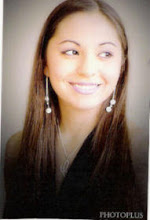Film 301
Visual Essay II
April 22, 2009
The Impact of Extreme Close-Ups in Stepford Wives
In the 1975 science fiction film, Stepford Wives (Dir. Bryan Forbes, 1975, United States) the special effect that is the most evident are the extreme close-up shots that signify the occurrences when the audience must remain attentive toward the subject that is being evaluated closely. There are a plethora of instances in which Joanna’s eyes are considered the focal point in which the camera zooms in to confirm the significance of this human trait.
According to Christine Cornea “many filmmakers were making extravagant use of effects like reverse motion, multiple exposure, extreme close-ups, stop motion and so on” ([i]). Although Stepford Wives does not contain a variety of complex special effects, the effect of the extreme close is important because it represents the importance of the human traits necessary in completing the wife replacements, which is later fulfilled by a robot. Cornea describes how “initially films excited audiences purely in the presentation of a moving and active photographic image of the world. However, this simple thrill soon wore thin and early cinema had to renew its novelty value by offering more unusual sights and spectacular displays” to remain more appealing to the audience ([ii]). Since this film was created over three decades ago, this statement proves that Stepford Wives did not require many extravagant effects to entertain the audience. Scott Bukatman explains, “What interests me the most about [special effects] is that they are addressed to me: they reinstate and acknowledge my presence in the theater and emphasize the experience of viewing” ([iii]). The special effect of the close-up in Stepford Wives also serves as a form of enjoyment for the audience because when the image of Joanna’s eyes are being captured closely, it explains the foreshadowing event of how one’s eyes are a trait that can distinguish you from another and are vital in completing the unifinished robot at the end of the film.

The picture displayed above is a close-up shot of Joanna’s eyes in a portrait drawn by a member of the men’s society in which Joanna’s husband, Walter belongs to. Joanna explains to her husband while pointing to the finished portrait of herself, . “See what you missed?” Joanna asks Walter. He replies, “It’s very good around the eyes” ([iv]). This reference to the human eye is significant because the eye serves as a vital feature and the only true characteristic from the wives that the robots will inherit. This portrait is produced and necessary in creating a robot that will replace Joanna.
Joanna attempts to locate her children when she comes to the conclusion that the men in Stepford are replacing their wives with robots in order to experience perfection and live their lives selfishly with an obedient wife. During her search, she approaches Dis, the ringleader of the men’s society, who expresses to Joanna , “well, that’s all there is so why don’t we get it over with? You know, you hurried us a little. We weren’t quite ready for you” ([v]).Joanna attempts to escape from Dis, fearing for her life. She runs into many different rooms and enters a room that is an exact replica of her own bedroom. Joanna discontinues her escape and is exasperated and confused as to how to react to the situation. She examines the replicated bedroom and sees her replacement: a robot who appears almost exactly like Joanna, except for two major changes: the robot has larger breasts to implement the focus on perfection and the robot does not yet have blue eyes as Joanna does. Instead, the robot’s eyes are completely blacked out. The unfinished robot approaches Joanna with a stocking as a prop to strangle her. The extreme close-up of the robot’s eye is depicted below to signify how unrealistic the robot appears and the dependence on human traits in order to create the essence of a true human being.

The film concludes with a close-up of the replacement Joanna’s eye. Although Joanna demonstrated much determination and attemtped to avoid being substituted, she was killed and the “new” wife who appeared just like Joanna would have the ability to meet her husband’s needs. The robot was finalized when it aquired the human eyes, which were vital to portray the representation of a real human being. The image displayed below is aclose-up image displayed in Stepford Wives, which establishes a thrilling conclusion due to the fact that it is impossible to distinguish Joanna from the robot.

Works Cited
Bukatman, Scott. Zooming Out: The End of Offscreen Space. The New American Cinema.
Edited by Jon Lewis. Duke University Press (1998): 248-272.
Cornea, Christine. Science Fiction Cinema Between Fantasy and Reality. New
Brunswick : Rutgers University Press, 2007.
The Stepford Wives, dir. Bryan Forbes, perf. Katherine Ross, Paula Prentiss, Peter
Masterson, and Nanette Newman, 1975, DVD , Paramount , 2004
Endnotes
[i] Christine Cornea, "Gender Blending and the Feminine Subject," Science Fiction Cinema Between Fantasy and Reality. ( New Brunswick : Rutgers University Press, 2007) p. 249
[ii] Christine Cornea, "Gender Blending and the Feminine Subject," Science Fiction Cinema Between Fantasy and Reality. ( New Brunswick : Rutgers University Press, 2007) p. 250
[iii] Bukatman, Scott. Zooming Out: The End of Offscreen Space. The New American Cinema. Edited by Jon Lewis. Duke University Press (1998): 267.
[iv] The Stepford Wives, dir. Bryan Forbes, perf. Katherine Ross, Paula Prentiss, Peter Masterson, and Nanette Newman, 1975, DVD, Paramount, 2004
[v] The Stepford Wives, dir. Bryan Forbes, perf. Katherine Ross, Paula Prentiss, Peter Masterson, and Nanette Newman, 1975, DVD , Paramount , 2004

No comments:
Post a Comment